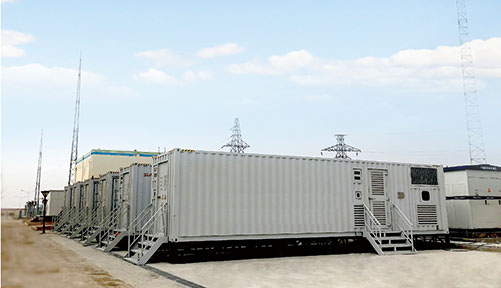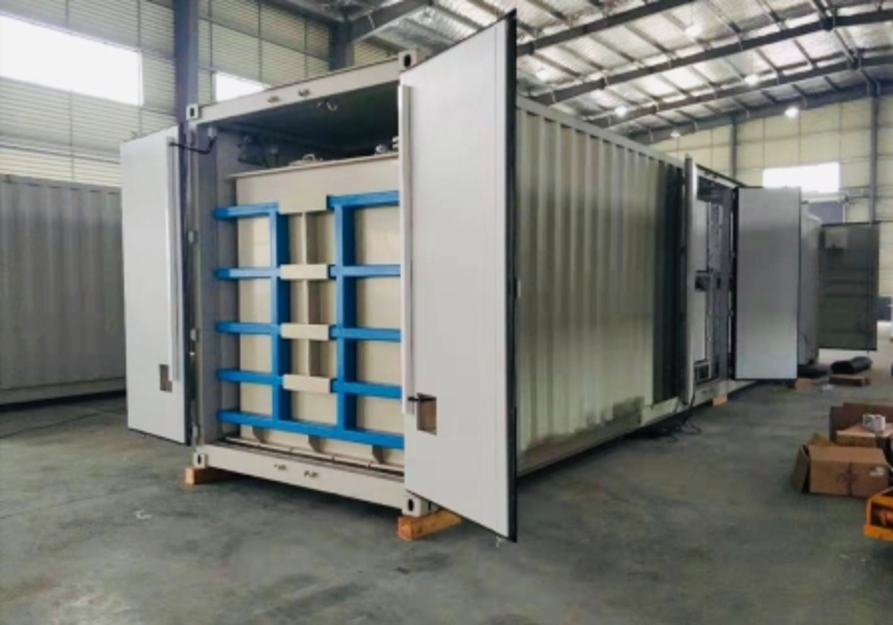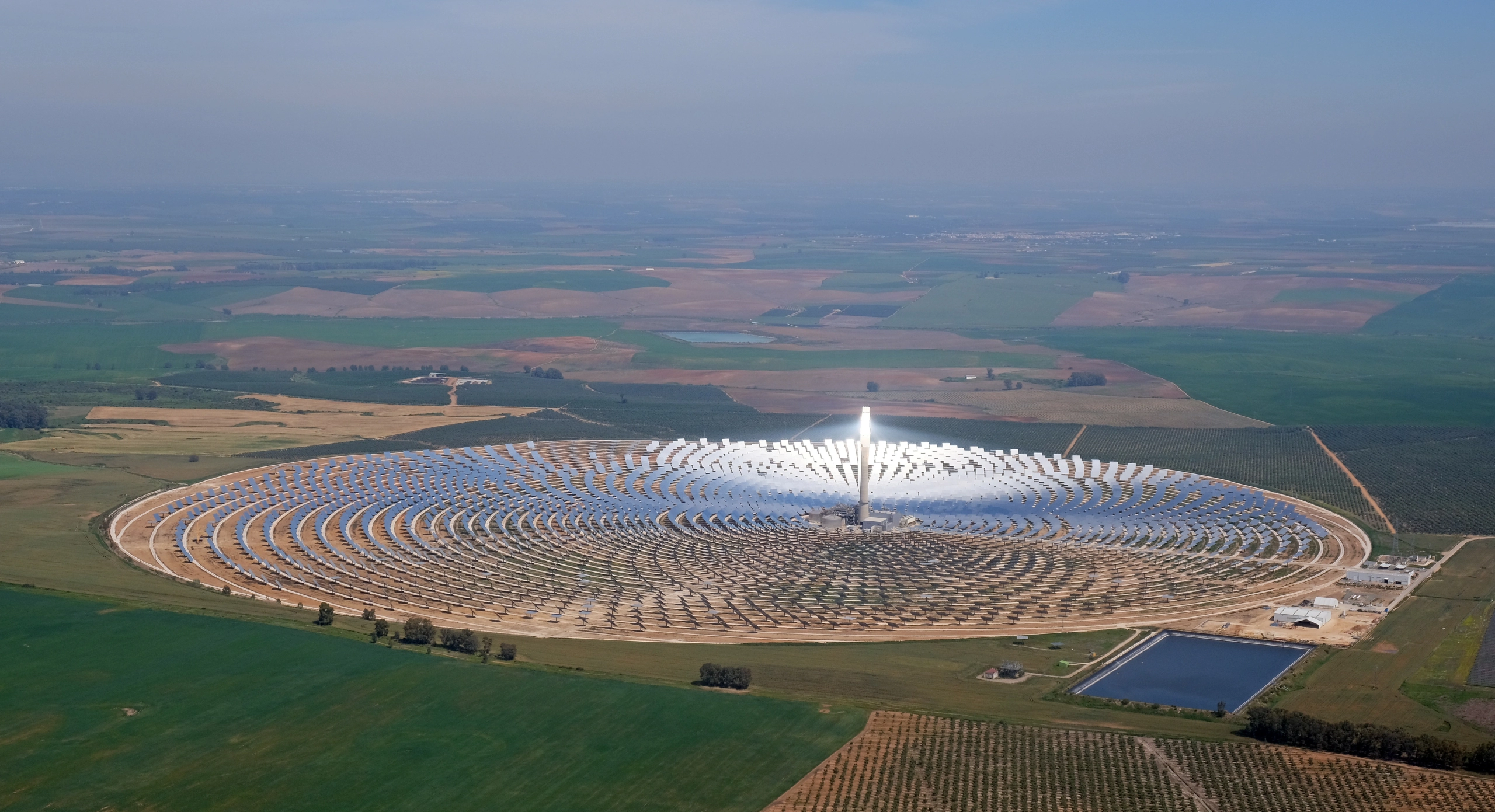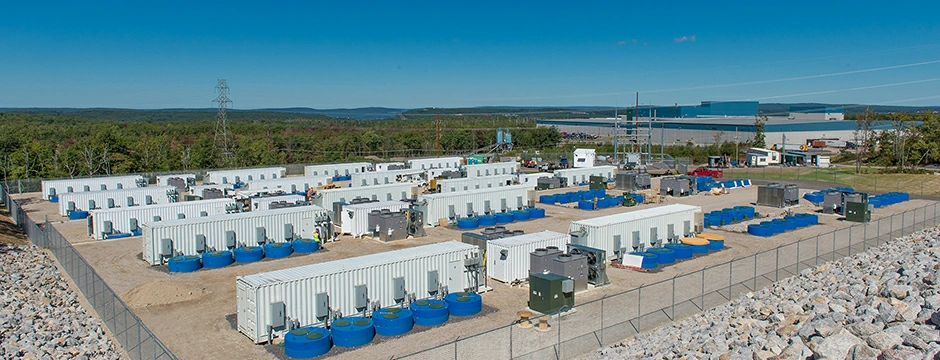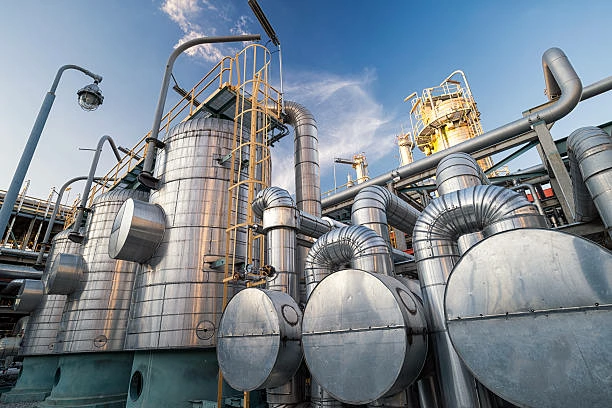When learning about renewable energy, you often come across the term “ESS.” What does it represent? This article will provide a detailed explanation and principles using simple language.
What does “ESS” mean in the energy field?
In the energy sector, ESS is an acronym for “Energy Storage System” It refers to a method of temporarily storing energy using a specific approach and releasing it when needed. It is often used in the renewable energy field. Whether it is hydropower, solar power, wind energy, tidal energy, etc., the electricity generated by these natural forces is vast and continuous. To prevent the generated energy from being wasted, ESS is built to maximize the use of energy.
ESS is also applied in commercial and industrial energy storage to avoid overload during peak electricity demand and to save costs. Some companies choose to build an ESS system to store electricity when grid prices are low and then release it when prices are high, thus saving costs.
In fact, ESS is not exclusive to large projects. With the technological upgrades of lithium batteries in recent years, many household energy storage batteries have appeared on the market, allowing people to store solar energy and use it on cloudy days or at night.
How ESS works
The basic principle of an ESS is to convert and store the obtained energy, then release it when needed. Through a converter, electrical energy is converted into a form suitable for storage, commonly into electrical energy stored in lithium-ion batteries.
Components of ESS
ESS typically consists of several key components, each playing an essential role in the overall functionality of the system:
Energy Storage Device:
The energy storage device is the core part of the ESS, used for storing energy.
Power Conversion System (PCS):
The power conversion system is responsible for converting power during energy storage and release. It includes inverters (which convert direct current to alternating current) and rectifiers (which convert alternating current to direct current).
Battery Management System (BMS):
For battery-based system, the Battery Management System is a critical component. BMS monitors and manages the voltage, current, temperature, and state of charge of the battery pack to ensure the battery’s safe operation, preventing overcharge, over-discharge, and overheating. BMS can also balance the voltage between battery cells to extend the overall life of the battery.
Energy Management System (EMS):
The Energy Management System is used to optimize the operation of the entire system. EMS monitors the input and output of energy, manages the charging and discharging times of the energy storage device, ensuring that the system can maximize the use of stored energy based on load demand and electricity price fluctuations.
Cooling System:
The cooling system is used to maintain the temperature stability of the energy storage device, especially in battery or mechanical energy storage systems. Temperature management is crucial for extending the system’s life and ensuring safe operation. Commonly used are liquid cooling or air cooling systems.
Protection Devices:
Protection devices include circuit breakers, fuses, isolators, and grounding devices. These devices are used to protect the system from overloads, short circuits, voltage fluctuations, and other electrical faults, ensuring the system can safely shut down in case of abnormal conditions.
Monitoring and Control System:
This system provides real-time data monitoring and control functions. It can monitor the status of the ESS, such as battery charge level, temperature, and power output, either remotely or locally.
Communication System:
The communication system is used to connect the system with external control systems or the grid. It allows data exchange between EMS, BMS, and other control systems.
What types of ESS are there?
Based on the principles of the converter, ESS can be divided into several branches. Next, I will introduce some types used in real life and their respective advantages and disadvantages:
Battery ESS (BESS)
Principle: Battery-based Energy Storage Systems store electrical energy in chemical form within a battery. The most common types are lithium-ion batteries, where lithium ions move between the anode and cathode during charge and discharge cycles. Other types include flow batteries, which store energy in liquid electrolytes.
Advantages: High energy density and long cycle life; high charge and discharge efficiency; modular design allows for sizing based on needs.
Disadvantages: High initial cost; battery life is affected by environmental conditions.
Use Case: PKNERGY’s commercial solar energy storage battery project.
Thermal Energy Storage
Principle: Thermal Energy Storage (TES) systems store energy in the form of heat or cold, which can later be used to generate electricity or provide heating/cooling. Common materials for TES include water, ice, or molten salts. These systems often work in conjunction with solar power or other renewable sources.
Advantages: Long energy storage time; relatively simple system with low maintenance costs; can balance seasonal energy demands.
Disadvantages: Low energy density; heat loss may reduce efficiency; large space required to store materials.
Use Case: The Gemasolar solar power plant in Spain uses molten salt for heat storage.
Liquid Air Energy Storage (LAES)
Principle: Liquid Air Energy Storage (LAES) involves cooling air to cryogenic temperatures (around -196°C) to liquefy it, which is then stored in insulated tanks. When energy is needed, the liquid air is exposed to ambient temperatures, causing it to rapidly expand and turn back into gas. This expansion process drives a turbine to generate electricity. LAES systems can also utilize waste heat or cold to improve efficiency.
Advantages: Can store energy on a large scale, suitable for grid regulation; uses inexpensive and non-toxic raw materials (air); long system life with low maintenance needs; higher energy density, especially when combined with waste heat or cold.
Disadvantages: Lower conversion efficiency, typically around 50-60%; high construction costs requiring large-scale infrastructure; requires low-temperature storage technology, which involves energy loss.
Use Case: The liquid air energy storage project by Highview Power in the UK.
Compressed Air Energy Storage (CAES)
Principle: CAES systems use surplus electricity to compress air and store it in underground caverns or tanks. When energy demand is high, the compressed air is released, heated, and expanded to drive turbines that generate electricity.
Advantages: Suitable for large-scale energy storage; low cost, especially when using natural underground caverns; allows for long-term energy storage.
Disadvantages: Low system efficiency with significant energy loss; requires a large underground space; environmental impacts, such as carbon emissions during air heating.
Use Case: The CAES facility in McIntosh, USA.
Flywheel Energy Storage
Principle: Flywheel energy storage systems convert electrical energy into kinetic energy by spinning a rotor at high speeds. When energy is needed, the rotor’s kinetic energy is converted back into electrical energy.
Advantages: High power density; extremely low maintenance requirements; fast charge and discharge capability.
Disadvantages: Low energy density; high construction costs; short energy storage time, suitable for short-term balancing needs.
Use Case: The flywheel energy storage system by Beacon Power.
Chemical Energy Storage
Principle: Chemical Energy Storage involves converting electrical energy into chemical energy, typically in the form of hydrogen or other chemical carriers. This energy can later be converted back into electricity through fuel cells or other chemical processes.
Advantages: High energy density; allows for long-term energy storage; widely available raw materials with flexible applications.
Disadvantages: Lower conversion efficiency; complex technology with high costs; significant infrastructure needs, especially for hydrogen storage and transportation.
Use Case: The Power-to-Gas facility in Germany converts excess electricity into hydrogen for storage.
Key factors affecting ESS cost
The cost of an Energy Storage System (ESS) is primarily influenced by factors such as battery type, system size, material costs, manufacturing and installation expenses, maintenance and operating costs (OPEX), as well as the system’s lifespan and cycle count. The scale and complexity of the ESS, quality requirements, and long-term maintenance and replacement costs all impact the overall cost-effectiveness of the ESS. Additionally, the longer the system’s lifespan and the more cycles it can complete, the lower the long-term cost.
Conclusion
As a means of storing energy, ESS systems can significantly reduce society’s reliance on traditional fossil fuels. Especially for countries with high electricity demand, both small household ESS and large commercial energy storage offer good solutions. This means the energy storage market will become increasingly popular. Contact PKNERGY now to learn more about building an ESS.
FAQ:
How does a solar energy storage system work?
The working principle of a solar energy storage system is to store the excess energy generated by solar panels. When the sun is shining, solar panels produce electricity, which can be used immediately or stored in an Energy Storage System (ESS) for later use.
Can you have battery backup without solar?
Yes, you can charge from the grid to use as a backup power source without needing a solar system.
How much electricity can be stored in a battery?
It depends on the size of the battery you use. Common household energy storage batteries include 5kWh, 10kWh, 15kWh
Save Money, Protect Environment
PKNERGY helps you reduce your energy bills for your home solar energy storage, store your solar energy for use anytime- at night or during an outage.

